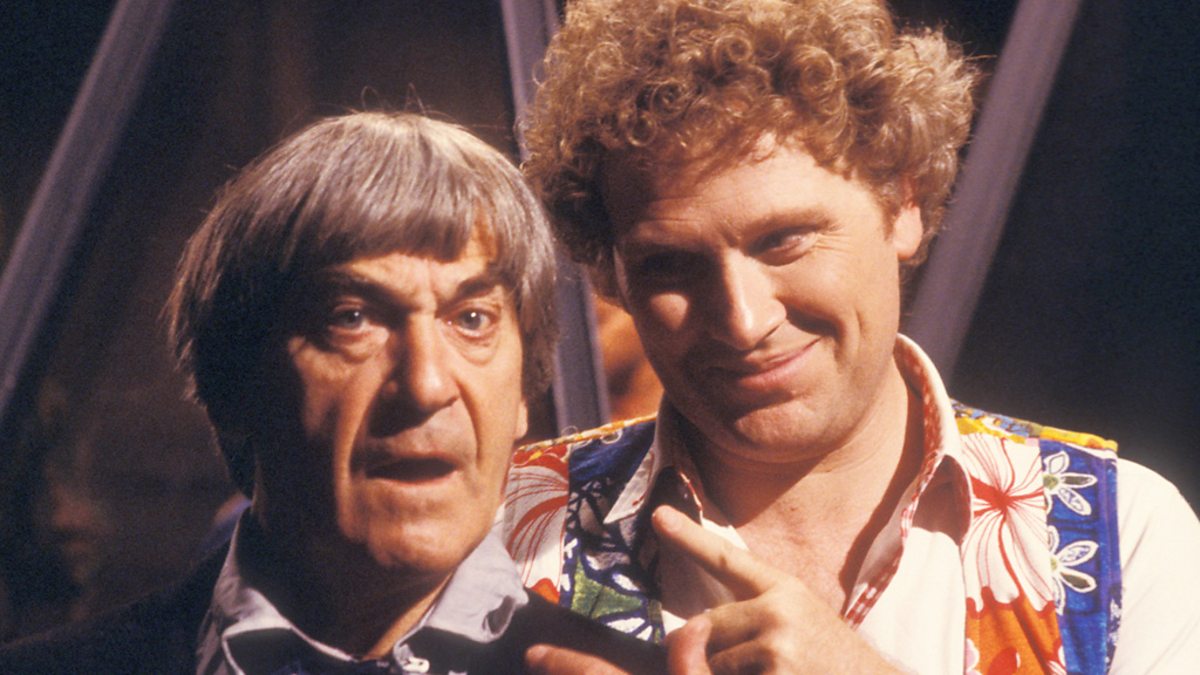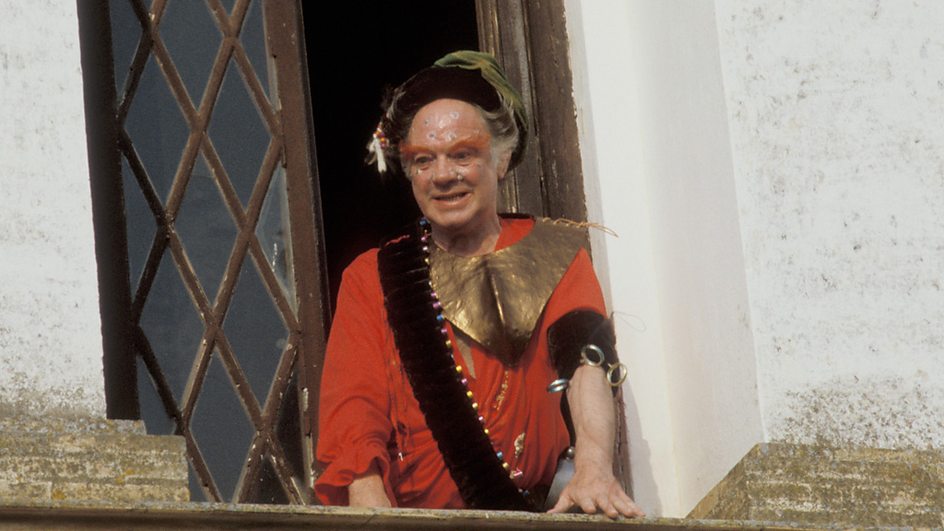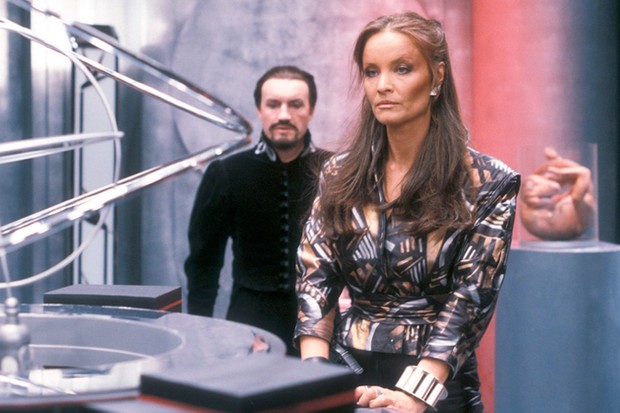Doctor Who Season 22 was Colin Baker’s first full season as the Doctor, and saw the arrival of a villainous new Time Lord, plus a new episode format.

The producer of Doctor Who Season 22, John Nathan-Turner, was always keen to experiment, and for Colin Baker’s first full series at the helm of the TARDIS, he and his script editor Eric Saward decided to shake-up the show’s format. Since 1963, Doctor Who episodes had been 25 minutes long (with the occasional, rare exception) but a new approach was adopted for Doctor Who Season 22. Episodes would now last for 45 minutes, with stories consisting of two or three episodes each.
The effectiveness of the new episode length remains the subject of debate to this day. And whilst it only lasted for one season, it’s worth noting that, when the series returned in 2005, Season 22’s longer episode format returned with it, so it can’t have been a complete failure. Indeed, stories such as Philip Martin’s ‘Vengeance on Varos’ (the second story of Doctor Who Season 22) have gone on to be regarded as classics.
Despite this, ‘Vengeance on Varos’ may also be one of the most violent and adult stories in Doctor Who history. It deals with a society that is addicted to television – and grizzly television at that. The population is constantly subjected to broadcasts of public executions, often of a deeply disturbing nature. At one point, the people of Varos are forced to watch a dying Doctor as he writhes in a hallucinatory desert, convinced that he is dying of thirst. Later on, they witness him wrestling with two of Varos’ guards, whom he propels into a pool of acid. As they burn alive, he looks at them and says, sardonically: “Forgive me if I don’t join you.”
But the graphic nature of ‘Vengeance on Varos’ is consistent with Doctor Who Season 22’s more adult tone – something that was welcomed by some contemporary fans. And whilst others took issue with the series’ dark new direction, the viewing figures remained consistently high, with 7.7 million tuning in for its finale.
Interestingly, one of Doctor Who Season 22’s darker themes was cannibalism, cropping up in two out of its six stories. The darkest of these was Eric Saward’s ‘Revelation of the Daleks,’ which was set in world whose economy was sustained by the consumption of human flesh. But the twist was that the population did not realise it was eating its own relatives. As Dalek creator Davros so icily put it: “That would have created what I believe is termed ‘consumer resistance.'”
Conversely, the depiction of cannibalism in other parts of Doctor Who Season 22 was more farcical although, arguably, this may have served to make it more frightening. For example, in ‘The Two Doctors,’ viewers were introduced to a race of humanoid creatures called Androgums – a voracious species who were always in pursuit of their next meal (human flesh, ideally.) The character of Shockeye was particularly whimsical, delighting in the thought of having a shepherd’s pie because he thought it contained an actual shepherd. These humorous moments were in stark contrast to the more disturbing scenes, such as when Shockeye murdered a waiter in the middle of a Spanish restaurant.

Despite this, one of the highlights of ‘The Two Doctors’ was the return of Patrick Troughton as the Second Doctor, alongside Fraser Hines as his companion Jamie. Fresh from their appearance in 1983’s ‘The Five Doctors,’ these two actors were given an even slice of the action, and one could almost have been convinced that they were watching a classic Second Doctor adventure.
Certainly, there was a great deal of fan service at play in ‘The Two Doctors,’ and indeed in Doctor Who Season 22 on the whole. Viewers were treated to the return of the villainous Sontarans (not seen since 1978’s ‘The Invasion of Time’) and the return of former script editor Robert Holmes, who had previously written some of the most-loved stories in Doctor Who history, such as ‘Pyramids of Mars’ and ‘The Talons of Weng-Chiang.’ Eagle-eyed sci-fi buffs would also have spotted Blake’s 7‘s Paul Darrow and Jacqueline Pearce making guest appearances.
Other familiar faces included the Cybermen – who were chosen as the man baddies for the season opener – plus the aforementioned Daleks, and the return of the Master played by Anthony Ainley.
But Doctor Who Season 22 also saw the introduction of the scientist the Rani – another renegade Time Lord with her own TARDIS, played by the scenery-chewing Kate O’Mara. She was the creation of new Doctor Who writers Pip and Jane Baker, and was first introduced in Season 22’s ‘The Mark of the Rani.’

But despite Doctor Who Season 22’s triumphs, there was a point where it looked like it was going to be the last Doctor Who series of all time. The axe fell on the programme during the transmission of its penultimate story ‘Timelash,’ resulting in a public outcry. The reasons for this cancellation have been well-documented over the years; the truth is, the BBC wanted to invest in new types of programmes (such as the soap opera ‘Eastenders’) and BBC One controller Michael Grade was, by his own admission, against the programme’s continuation as he thought it was “rubbish.”
However, the outcry against the BBC’s proposals was acrimonious, to say the least, and the Corporation ultimately back-peddled on its mission to cancel Doctor Who and put the show on an 18 month hiatus instead.
But when the series eventually returned in autumn 1986, it reverted back to its 25 minute format, and was given a curtailed season length. The official reason for the break was that Doctor Who Season 22 had been “too violent,” and the BBC wanted to give the programme-makers time to rethink it.
And so if you’ve ever watched ‘Revelation of the Daleks’ and wondered why it ended so abruptly, this is why. Doctor Who Season 22 was original meant to end with the Doctor promising Peri a trip to Blackpool, leading into Season 23’s opening story ‘The Nightmare Fair.’ But with the dreaded hiatus on the horizon, producer John Nathan-Turner was forced to put his Season 23 plans in the bin. ‘Revelation of the Daleks,’ therefore, ended with the Sixth Doctor in freezeframe, paused before he could utter the word “Blackpool.”
But despite the behind-the-scenes drama, Doctor Who Season 22 is still highly-regarded amongst fans, and is a strong introduction to the Time Lord’s sixth incarnation – even if no one can really work out who wrote ‘Attack of the Cybermen.’
What’s your favourite story from Doctor Who Season 22? Let me know in the comments below.

Doctor Who hat – order now from the Lovarzi shop!

Absolutely love season 22 for the reasons mentioned in the article. Plus the CyberController returns even played by the same actor, Michael Kilgarriff, from Tomb of the Cybermen! I’m disappointed that the original plan for 23 was abandoned because it would have followed the same 45 minute episode format and packed with returning characters like the Toymaker, Sil, Ice Warriors, Autons, The Brigadier, and the Tractators.